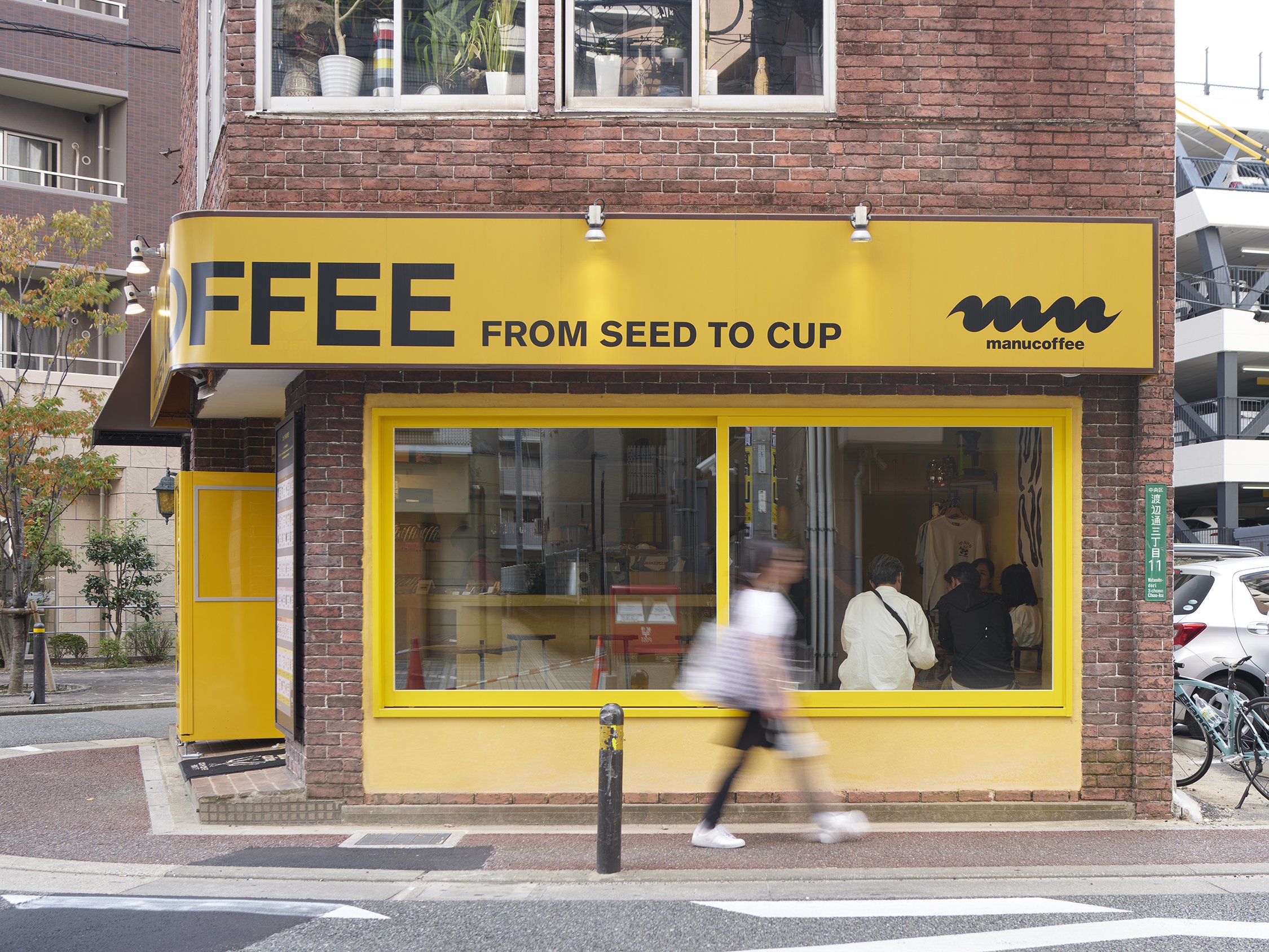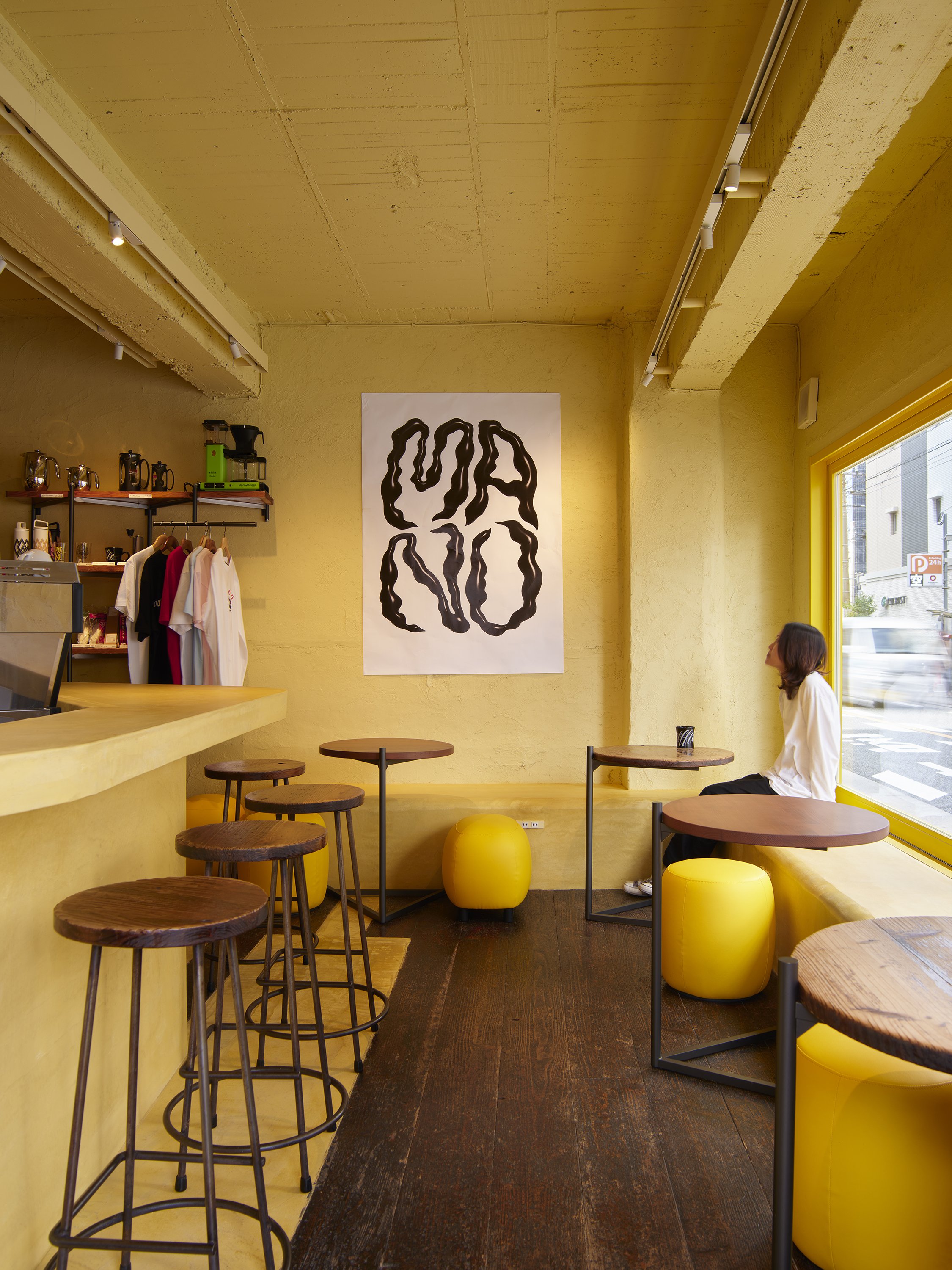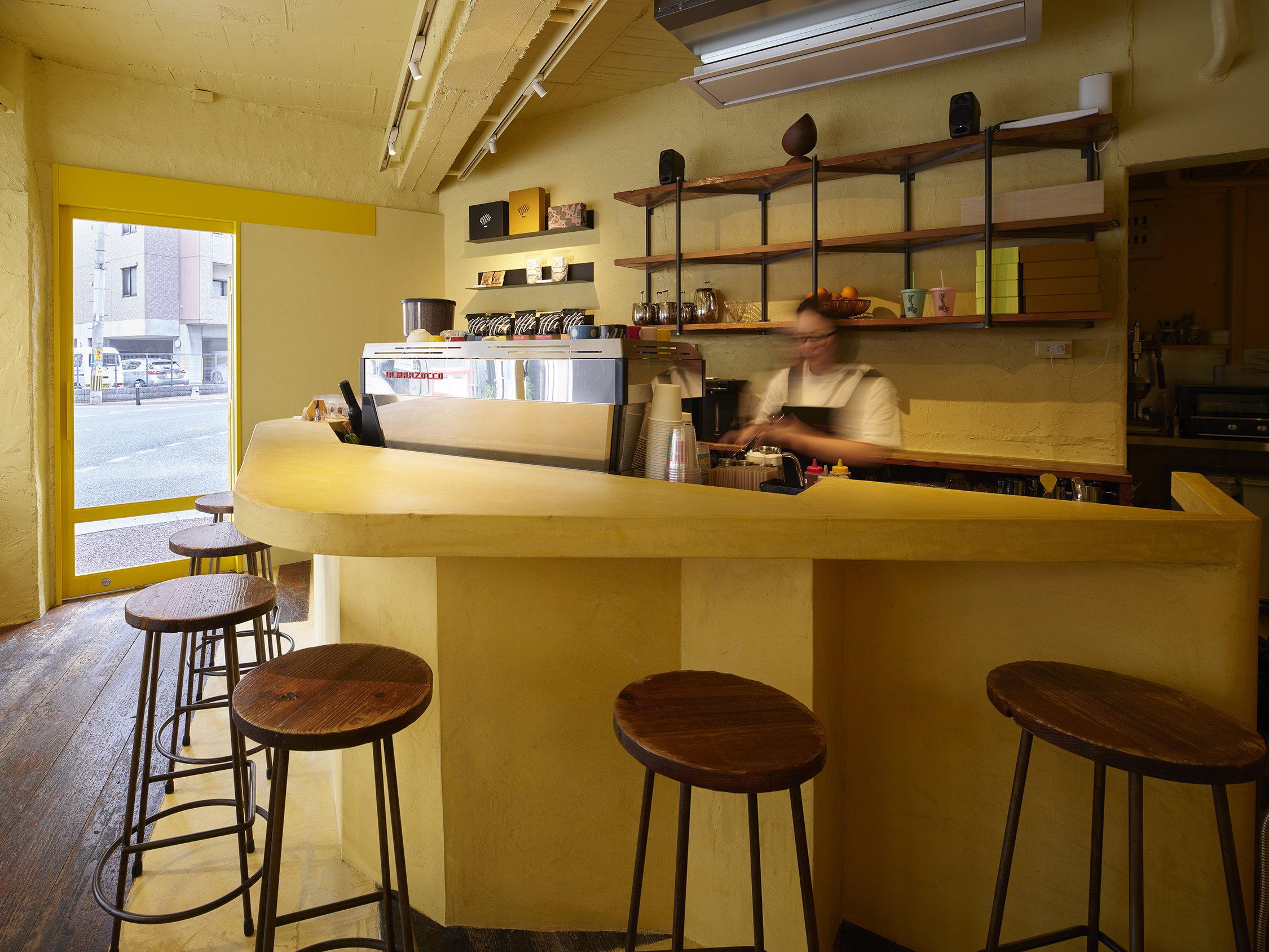manu coffee haruyoshi designed by akasu Gaku Design and Associate (Japan)
n the center of Fukuoka, there are three major districts including "Tenjin District," "Hakata District," and the "Nakasu District," which is the largest entertainment district in Western Japan. Adjacent to each of these three central areas is a unique neighborhood called "Haruyoshi," serving as a bedroom community for young professionals working in the city center. It is a bustling area with numerous dining establishments and acts as a hub for various nightlife cultures. Over the years, it has developed into a distinct and special place where different elements intertwine, giving rise to its own nightlife culture and subculture.
"manu coffee" has been open in the Haruyoshi district for 20 years and has always been a central hub for young people's information and subculture dissemination. It continues to exist as a place where people constantly intersect and connect.
This project represents the first renovation in 20 years for "manu coffee," which serves as a gateway to its unique culture.
The shop front facing the busy main street used to be dark and closed off in the previous store. In this project, a large, operable steel sash has been installed in the shop front, with the aim of promoting various interactions between the interior of the shop and people passing by on the street by allowing it to be opened and closed.
Furthermore, the design approach for this project involves minimizing the use of new materials and instead focusing on reusing old building materials. Traditional plastering techniques have been employed to craft the shop's counter and bench sofas. Rather than discarding all of the old flooring, a deliberate decision was made to perform renovations by patchworking different materials in damaged areas, creating a design that harmonizes the old and the new.
The warm lighting and ambiance spilling out from the store create a sense of cleanliness and reassurance in the city, dispelling any apprehension that pedestrians may have, replacing it with curiosity about what lies within. The textured materials and intricate details that have aged over time contribute to a feeling of comfort and a sense of security in that place, evoking a continuous connection between the store's history, the city's history, and the ongoing culture they share.
We hope that the sash (entrance), newly installed as part of the store's renovation, will facilitate interaction between the renovated interior and the exterior, contributing not only to the coffee shop's success but also to the healthy development of the city. We look forward to this renovation serving as a gateway for new connections among people and the birth of a new culture.








Designer Profile
Website: https://gaku-design.com


